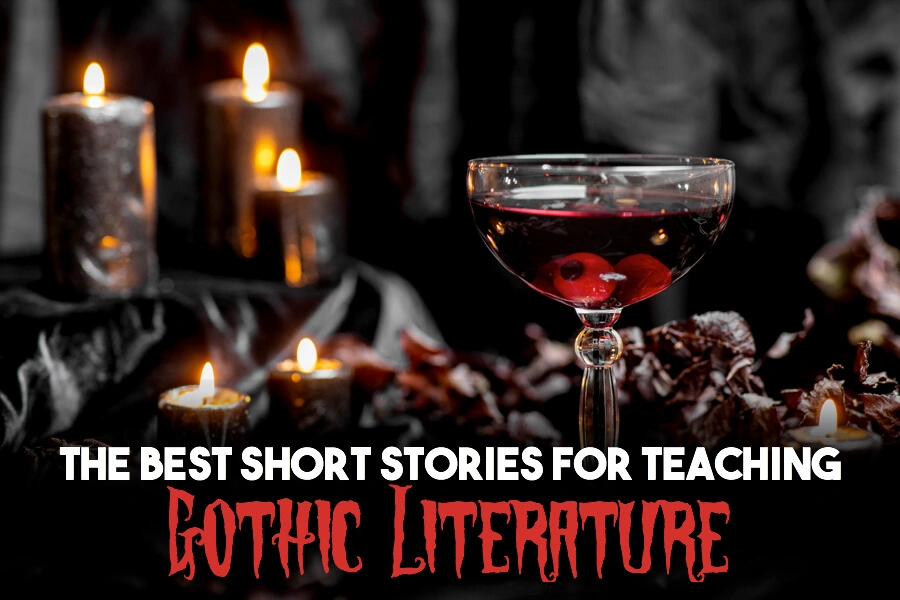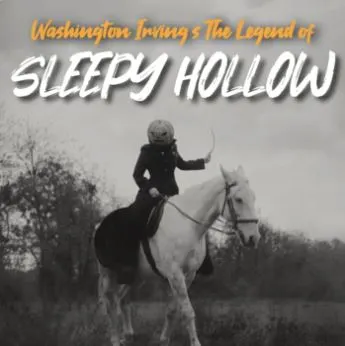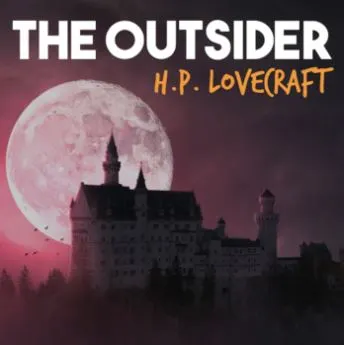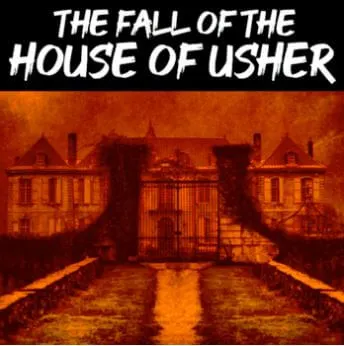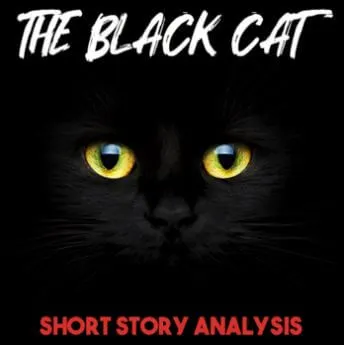Gothic short stories have always been a favorite with my students. From the mystery and suspense to the old creepy buildings, to the heightened emotions and the hints of the supernatural… there is just something about the gothic genre that kids gravitate towards.
“The Veldt” by Ray Bradbury
This modern day “science fiction” gothic tale will certainly give your students the shivers. George and Lydia let the virtual reality world do everything for their children, from bathing them to entertaining them. Soon they begin to notice that the virtual reality scene is continuously stuck on the African veldt, and the lions are devouring a carcass at the edge of the screen. Concerned, the parents send their children Peter and Wendy to a psychologist, who suggests turning off the virtual reality entirely. The parents do not heed this advice; this tragically results in their death when their own children feed them to the lions.
This gothic tale is rife with suspense and horror, and students love the altered vibe as they read, and the way the characters communicate so poorly. My students find the virtual reality aspect utterly relatable with today’s technology becoming so advanced. Many great discussions can come into play about our dependence on technology. And although there is no old castle, the African veldt provides the equivalent of secret doors and the supernatural, which lure the reader in a gripping way.
“Luella Miller” by Mary Wilkins Freeman
Luella Miller, through a series of roommates who end up withering away while Luella herself thrives, is a new world vampire in an old world town. Though a little bit longer than the other stories on this list, the unsettling development of person after person losing their lives after being with Luella is very gripping for students. After marrying Erastus, he soon died. And although Luella was a teacher, one of her students did most of the work. The student soon deteriorated and died too. They are not the only casualties.
The entire story is filled with unease, and students love to wonder about what is really going on. Make sure to point out the inexplicable events in the story and how they relate to the gothic theme of gloom and horror. Luella is a vampire and seems to be sucking the life out of those around her. This is also a great story to use to delve into the vocabulary of the gothic.
“Yellow Wallpaper” by Charlotte Perkins Gilman
In this unsettling tale, an unnamed narrator is locked in a bedroom on the second floor of a mansion her husband John rented. John is a doctor and claims his wife has a nervous disorder, but readers can infer she has depression, possibly postpartum depression. The yellow wallpaper mutates in front of her eyes, and she is certain she sees a woman crawling behind the intricate design, so she decides to strip all of the wallpaper down in order to free this woman. When her husband finds her, she is scuttling around the room in a crazed manner and he promptly faints. She continues to crawl around the room and move around her husband’s unmoving body.
This psychological thriller is the epitome of a woman being overtaken by a tyrannical abusive male, and students will appreciate this vivid example. Make sure to point out the elements of the supernatural with the questionable maneuvers of the wallpaper itself, as well as the gloomy mood and setting of the story. This tale also lends itself to a great conversation on the importance of mental health.
“The Legend of Sleepy Hollow” by Washington Irving
The private glen where the story is written is known to be haunted, which adds to the mysterious atmosphere of this story. Many people who live there are overcome by supernatural happenings, and strange things are known to occur. The story surrounds Ichabod Crane, who comes to the town to help out and is courting a woman named Katrina. Losing her hand to Abraham Van Brunt, he is riding home through a dark swamp region, a place ripe with superstitions, when he meets the Headless Horseman, who throws his head like a rocket at Ichabod while Ichabod is trying to escape. Ichabod is never seen again.
Students love to wonder if Van Brunt is the Horseman who drives Ichabod away, and the whole story is high on the creep-o-meter in my class. Teaching this story is a good chance to show how history and superstitions relate, and to talk about the elements of a gothic landscape.
“The Monkey’s Paw” by W.W. Jacobs
When a cursed talisman (a monkey’s paw) falls into the hands of the White family, Mr. White is tempted to make any three wishes come true. Curiosity and greed get the best of him. He tries to remain somewhat modest and wishes for 200 pounds. That night there is a knock at the door with news that the Whites’ son, Herbert, died at work and there is a 200 pound goodwill payment. The second wish is used to wish Herbert back to life, but when he appears at the door as an undead creature, Mr. White quickly wishes him away, and the family is left broken-hearted.
My students love connecting to the three wishes motif and sharing what they would choose if they had a chance at three wishes. The elements of the macabre when the “creature son” appears at the door adds to the mystery. This is a great time to teach students about theme, foreshadowing, irony, and symbolism. It is ironic that three wishes are meant to bring you happiness not despair. Students will also recognize the number three is repeated throughout the story and realize its symbolism with misfortune.
“The Mark of the Beast” by Rudyard Kipling
The main character Fleete—in a drunken stupor on New Year’s Eve—puts out his cigar on a temple of Hanuman the monkey god, setting a chain of events into motion. A leperous priest bites him in retaliation and casts a spell which causes Fleete to begin acting crazy. After forcing the priest to reverse the spell, Fleete finally returns to normal.
This gothic tale is gripping for students who can also learn some history of the time about lepers and rabies. My students delve into other stories of curses and spells as we discuss this story. The ancient prophecy and high emotion is also definitely part of the appeal for the students in my class. Doesn’t every kid enjoy a good werewolf story?
“The Outsider” by H.P. Lovecraft
In this psychological thriller, the narrator is ensconced in a castle surrounded by trees and cannot remember the last time he has encountered a human. The narrator struggles to free himself by climbing to the top of the castle. As he arrives, the crumbling stairs lead him somehow to a basement where there are many people terrified of a beast. He joins them in their fear, running from the castle, as the reader understands he has seen the beast in the mirror, which is himself.
The crumbling castle is a huge symbol in this piece and mirrors the crumbling narrator himself. My students love the heightened emotion as the man struggles to free himself from the beast, when all along the beast was himself. Point out the gloomy vocabulary and descriptions of the castle, as your students can enjoy debating whether he will ever recover from being an outsider.
“A Vine on a House” by Ambrose Bierce
For a very short gothic tale, turn to the story of Matilda Harding, a one-legged protagonist who goes to visit her mother and never returns. Her husband and sister are left behind in the house, but eventually they too disappear. A larger-than-life vine grows on the house that is strangely reminiscent of Matilda. When townspeople later try to pull up the vine, they realize it looks just like Matilda. No one wants to go to the house after that.
This story has the gothic element of gloom and suspense and a feeling of unease for the reader. This also reflects the women in distress motif, though in a mysterious way that makes the reader wonder what is going on. The giant vine is otherworldly and adds to the sense of mystery. Students love to debate what could have happened to Matilda, and what the giant vine represents, especially with the way gothic stories often portray women.
“The Fall of the House of Usher” by Edgar Allan Poe
Students love this tale of the very creepy, depressed Roderick who calls his boyhood friend to his dilapidated house because he needs some help. Once the unnamed friend/narrator arrives, Roderick’s sister Madeline falls into a death-like trance and the two men entomb her in the walls, supposedly alive. The men spend their time listening to somber music and looking at Roderick’s art. Eventually the entire house falls into the lake, and the Usher family is no more.
This classic tale has it all: the family is falling apart, as is the house. Although not quite a castle, the house is dark, mysterious, and decrepit. There are definitely supernatural events and the overall other-wordly feeling that pervades the story. Another gothic element is the intense emotion of Roderick and the “woman in distress” angle, and my students love to point out the foreshadowing clues that show Madeline’s distress as they read.
“The Body Snatcher” by Robert Louis Stevenson
In this macabre tale, Doctor Wolfe Macfarlane and his friend Fettes become reacquainted after a long time apart. They had previously worked together cataloguing bodies for dissection, and supposedly covered up a murder to avoid being implicated themselves. When Fettes is certain Macfarlane has murdered their friend Gray, he again keeps his mouth shut while they destroy the evidence. The story ends with the body of Gray put back together and sitting in the front seat of the car.
Students love to hate this ambiguous ending as they decide how a chopped up body could end up whole again in the front seat. This supernatural event is at the heart of the story, as are the elements of mystery and suspense peppered throughout. The gloom and darkness keeps the mood gothic, as well, and this is another story that is excellent for teaching gothic vocabulary.
“The Tell-Tale Heart” by Edgar Allan Poe
Last but not least is “The Tell-Tale Heart”—arguably one of the most popular gothic short stories ever taught in school. An unnamed narrator, who claims he is not insane, makes a plan to kill an old man under the belief that this man has an “evil eye.” After stalking the old man and watching him sleep, he finally commits the crime that rids him of evil and makes the world a better place. Right?
The police stop by after someone reported a scream, but the narrator is unphased. Although he dismembered the body and hid the limbs under the floorboards, the narrator arrogantly invites the officers in to search his home and even sit above the very spot the body is concealed. The narrator succumbs to his guilt and confesses the crime after believing he can still hear the old man’s heart beating from under the planks.
This story is a staple for a reason. Mood, suspense, symbolism, theme, and figurative language all are perfect literary elements to teach students while reading this classic gothic story. Students are excited by the concept of an unreliable narrator and the bizarre motivation behind the crime. I love to have my students debate whether or not the narrator should be charged with first degree murder for his premeditated crime or if the narrator should be found not guilty by reason of insanity, since he clearly is a person that requires serious psychological help.
Attachments area
“The Hand” by Guy de Maupassant
In this embedded narrative, M. Bermutier, a judge, tells credulous listeners about the mysterious murder of Sir John Rowell. Rowell was an odd man who kept to himself in the mountains. He liked to go hunting… man-hunting. In even more peculiar fashion, he kept a severed hand chained up in his home, as if it could break away at any moment. A year after Bermutier’s encounter with Sir Rowell, the hunter is found dead, strangled… and the hand… missing!
In this unnerving tale, let your students decide… is it mere coincidence or is there supernatural elements at play?
“The Black Cat” by Edgar Allan Poe
From his prison cell the night before he is set to be executed, the narrator shares how his whole life fell apart. Once a gentle, loving man and husband, the narrator is overcome by alcoholism. He began divulging into atrocious and perverse acts. His love for animals dissipated. After brutally killing his dear cat Pluto, the narrator’s house sets fire… but mysteriously, an apparition of a cat is left behind. The horror does not end there.
The police arrive on scene after the narrator’s wife disappears. They are shocked to discover what they find! You’ll just have to keep reading to find out the rest. You have to love Poe’s creative take on unreliable narrators! Is the narrator insane, or is he telling the truth?
“The Landlady” Roald Dahl
In this story, your students will learn to be careful who they trust! An old, helpless woman who runs a cheap bed and breakfast has a dark, sinister secret. When you first read the short story, it may seem like there’s no imminent danger, but that would be naïve, just like the protagonist Billy Weaver. Two words about what’s happening behind closed doors in this tale: human taxidermy.
This story is so engaging for students because all the gruesomeness is implied and Dahl leaves readers with a suspenseful cliffhanger. Your students will love to go back into the text and realize all the clues that led to Billy’s fate.
